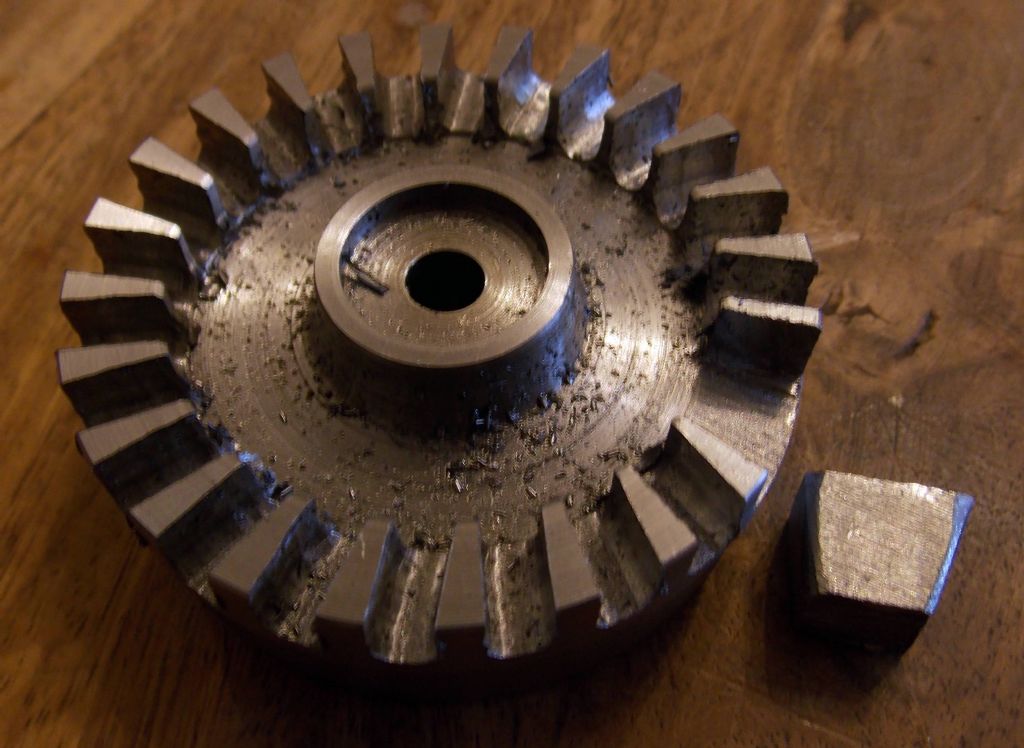Been rushing around this weekend like there's no tomorrow, but sadly no model engineering. 
Read the paper and posted on this forum!
Went to the gliding club to hand back one set of glider paperwork, pick up two more sets of paperwork and do a physical survey on two gliders prior to reviewing the paperwork and issuing an Airworthiness Review Certificate, if I'm happy that the glider is fit for flight. On one glider the inspector had forgotten to sign the inspection form and the logbook, and on the other glider there was no stainless steel plate in the cockpit with the glider registration on it. Not a good start! We got the paperwork signed and I'll make up a plate in the week.
Knocked out a further 220 aluminium spacers on the repetition lathe, during which there was some intermittent chatter from the main contactor. Normally this is due to the pull-in coil magnetics being dirty and not quite meeting, thus badgering the magnetic circuit. So I took the contactor apart, cleaned the mating faces, checked for loose wires and re-assembled. Not much better.  So I then took the whole thing apart, contacts and all. I gave all the contacts a good clean with fine wet 'n' dry, brushed out any dust in the contactor and reassembled. At least it worked this time, although you only had to just rest a finger on the stop button for it to chatter. Oddly it seems to have stopped doing this now, and ran for two hours this evening with no problems, so fingers crossed a good clean has sorted it.
So I then took the whole thing apart, contacts and all. I gave all the contacts a good clean with fine wet 'n' dry, brushed out any dust in the contactor and reassembled. At least it worked this time, although you only had to just rest a finger on the stop button for it to chatter. Oddly it seems to have stopped doing this now, and ran for two hours this evening with no problems, so fingers crossed a good clean has sorted it.
Transferred all the courgettes, tomatos, chillies and peppers from the propagator to individual pots on the kitchen windowsill. Put sweetcorn seeds in pots on the propagator. Cleaned the greenhouse with Jeynes fluid and loads of water. Cleared out the grass and weeds from around all the fruit trees in the front and back gardens. Spread fertilizer and sulphate of ammonia as needed.
Today's flying was cancelled due to a 25 knot crosswind, not good for training on an aircraft that I haven't flown for a few years, and which doesn't have a good crosswind limit. Read, and sent, some emails for work.
Started the paperwork review on three gliders, so that's the evenings gone for the next week.
Tomorrow I'll get back to the CNC mill and finish off 40 aluminium front panels for work, which was so rudely interrupted on Thursday night due to a bl00dy power cut. We then had another eight power cuts on Friday, ranging from a few seconds to three hours.
Wrote this post! Now time for a glass of wine.
Regards,
Andrew
Muzzer.



 Got the back off and the three-legged spider that holds the drum had fractured through one leg, then been ripped off the drum. I've kept this one going with new belt, heater and fan in the past, but I've had to admit defeat this time
Got the back off and the three-legged spider that holds the drum had fractured through one leg, then been ripped off the drum. I've kept this one going with new belt, heater and fan in the past, but I've had to admit defeat this time 






